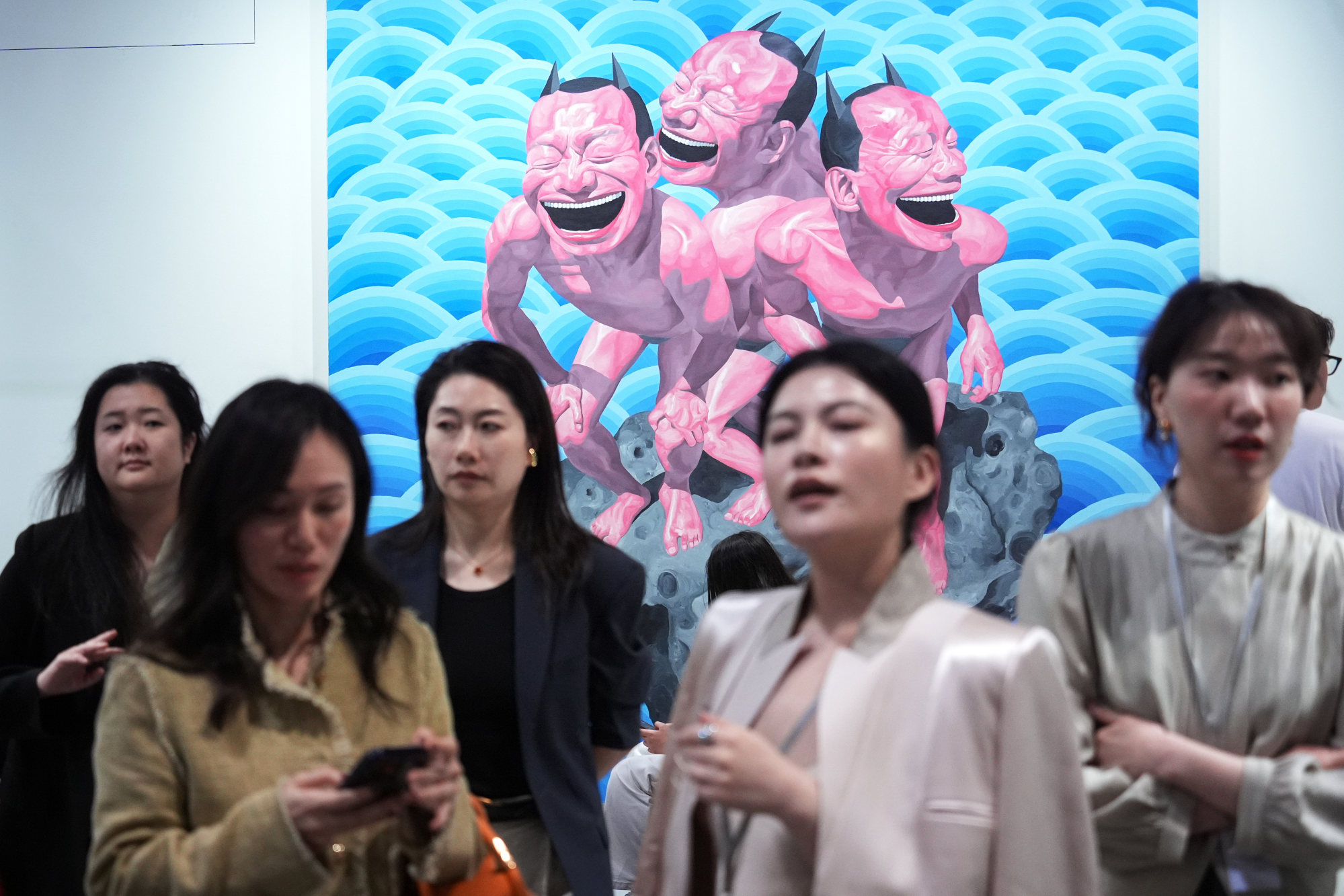
China’s growing stature in the art market fosters well-informed collectors, demand for advisory services from banks
- Family office advisers see higher demand for art advisory services, including impartial expertise, collection governance and legacy planning
- Art was the best-performing luxury asset class in 2023, with prices rising 11 per cent, according to Knight Frank
China’s art collectors have done their research when it comes to making purchases, and as China became the world’s second-largest art market in 2023, banks are experiencing higher demand for art advisory services, according to family office advisers.
“Art is becoming a key focus in many families, and its ability to solve liquidity needs for tactical investments,” said Bernie Wai, the Asia-Pacific head of the global family office group at Citigroup.
As the market grows, UBS is also experiencing higher demand for art advisory services, including impartial expertise on the market, collection governance and legacy planning, said Eric Landolt, the global co-head of family advisory, art and collecting at UBS wealth management.
While art is widely considered a passion investment, it was the best-performing luxury asset class in 2023, with prices rising 11 per cent, according to Knight Frank’s latest luxury investment index. Art was the only one of 10 index constituents to hit double-digit growth last year.

“We support some of China’s wealthiest families and individuals in exploring their personal collecting aspirations and building their own cultural legacy for future generations,” Landolt said.
During his visit to Hong Kong for Art Basel and various events held in the city last week, Landolt observed that Chinese collectors are well-informed art buyers.
“Chinese collectors do their research and ask well-informed questions,” he said. “Collectors are engaging in significant amounts of research before acquiring works.”
In China, while some first-generation families may be very passionate art collectors, they need advice on how to pass their collection to the next generation, which could mean financing some of the collection for liquidity, said Citigroup’s Wai.
Through art financing, clients can use their artwork as collateral to unlock liquidity for other investments, ideally while continuing to enjoy the benefits of owning the art and the potential long-term appreciation in value.
Dubai prince vows to launch family office in Hong Kong by end of May
“Japan is one example where a family office may want to follow the current momentum in the equity market,” Wai said.
First-generation collectors tend to focus more on old masters and Chinese art such as porcelain, calligraphy, vases and ink painting, while their children and grandchildren grew up with Western contemporary art, according to Wai. It is not uncommon for them to gradually sell off the Chinese art to purchase contemporary pieces, he added.
Sales in the Chinese art market are on the rise amid a post-pandemic boom in spending, according to a joint report by UBS, Art Basel and Art Economics released in March. Sales in China increased by 9 per cent to an estimated US$12.2 billion in 2023, according to the report.
Amid a strong surge of activity in the first half of the year, China moved up to be the second-largest art market in 2023, with its share rising to 19 per cent, surpassing the UK, which fell to third place with a 17 per cent share, the report said.
Meanwhile, the United States’ share dropped 3 per cent year on year, but the nation remained the top global art market, accounting for 42 per cent. High interest rates, inflation and political instability contributed to slowing growth at the top end of the market, the report said.

Enthusiastic buyers capitalised on sales of postponed auction inventories from 2022 in mainland China, while Hong Kong’s major fairs and exhibitions returned to their full-scale programmes in the first half of the year.
Online channels have contributed to the market’s growth by bringing new buyers to both dealers and auctions. The number and value of online-only auctions is rising, with both top-tier and smaller auction houses identifying online channels as the main source of new buyers.
In fact, most online sales that dealers made in 2023 were to new buyers, with digital channels as an important source of new buyers, even though they still rank behind art fairs and gallery visits, according to UBS.
“Significant numbers of new, young and ambitious collectors are entering the market, particularly in China, with events like Art Basel Hong Kong forming a pipeline of business for dealers and gallerists,” Landolt said.
.

